One of the most popular categories for ecommerce is clothing and accessories. If you have a knack for fashion, this can be one of the best options for starting an online business. Here we’ll take a closer look at how to sell clothes online.
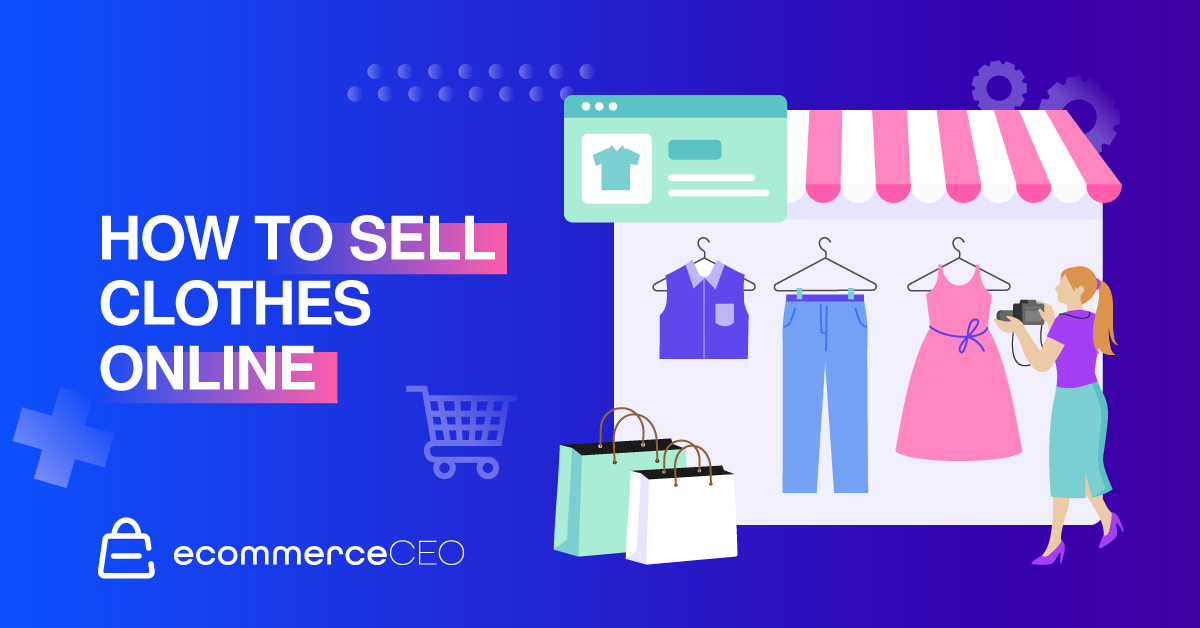
Many start reselling clothes online to declutter or even as a hobby, only to find there is untapped business potential they want to pursue. One of the biggest perks of selling clothing online is there are many ways to do it, from selling a single item on established marketplace apps to launching your own ecommerce website.
Why You Should Sell Clothes Online
The clothing sector accounts for over 20% of the entire ecommerce industry in the United States. The industry has enjoyed consistent growth year-over-year with no end in sight.
Sustainability is a major player when it comes to the resale industry. Many sellers are looking for ways to be eco-friendly and environmentally aware. Sustainable fashion is on the rise, with second-hand clothing companies taking over fast fashion.
If you are looking for a great opportunity to break into the world of ecommerce, save the planet, or just want to clean out your closet and make some extra cash, here are some tips for selling clothes, footwear, and accessories in 2022.
Best Places to Sell Clothes Online
Clothing is an excellent category for ecommerce businesses. There are so many great sources for clothes and avenues for selling them. You could create your own ecommerce site or use one of these popular options to connect with customers.
Etsy
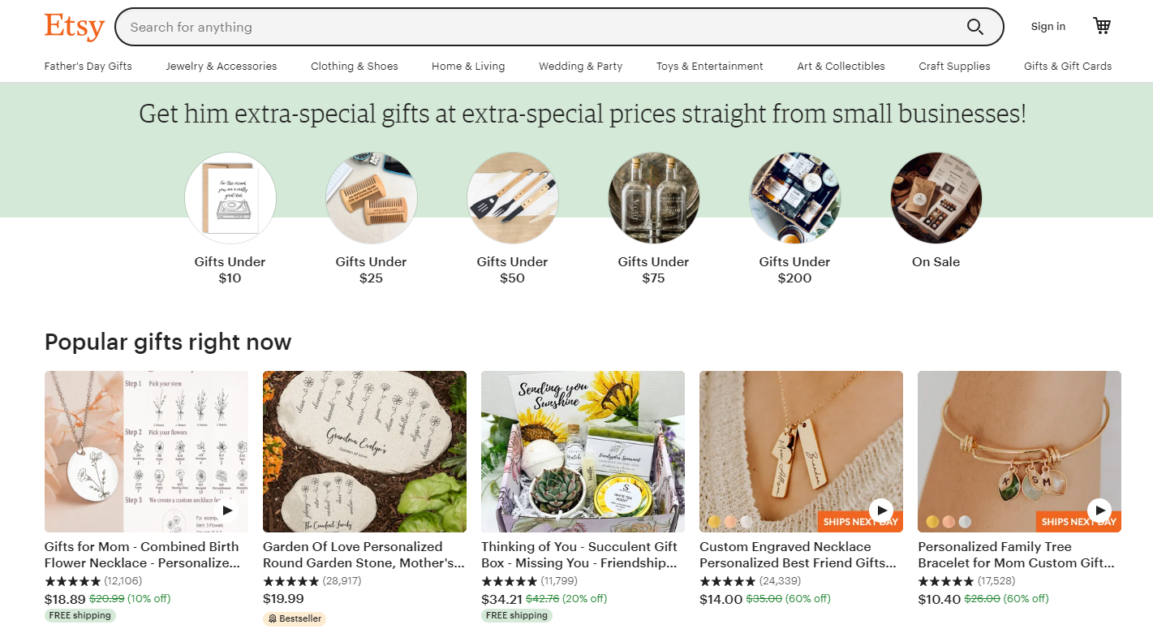
Etsy is the online hub for handmade goods, but that doesn’t mean everything you sell there needs to be made from scratch. Popular clothes sellers on Etsy source clothing and modify them. Some examples include:
- Screen printing
- Vinyl printing
- Designs on-demand
- Tie-dye
- Distressing
- Other customization
These strategies allow many to sell clothes on Etsy without actually creating the clothing items, just modifying them with a unique craft. Another exception Etsy allows for is vintage clothing. Of course, if you make clothing from scratch, by all means, sell them on Etsy!
Poshmark

Poshmark aims to be a social media platform for clothing sales. Sellers have a closet that shoppers can follow and leave comments or questions. Shipping is extremely easy: buyers pay a flat commission fee for items up to five pounds, and sellers just print a label which is automatically generated and sent to their email.
Poshmark also has four themed events per day called parties, where sellers can share relevant merchandise with their followers. Potential buyers can also make “offers” on listings, which the seller can counter or accept. Sellers can also send discounts or reduce shipping costs for shoppers who have “liked” their items.
Read more: How to Sell on Poshmark
Mercari

Mercari is an app-based marketplace for just about any product category. It offers customizable shipping options, which can make the final selling price lower for many items. When an item is purchased, the seller has the option of using a Mercari shipping label or another source. Shoppers can make offers on items or message sellers with questions.
Depop
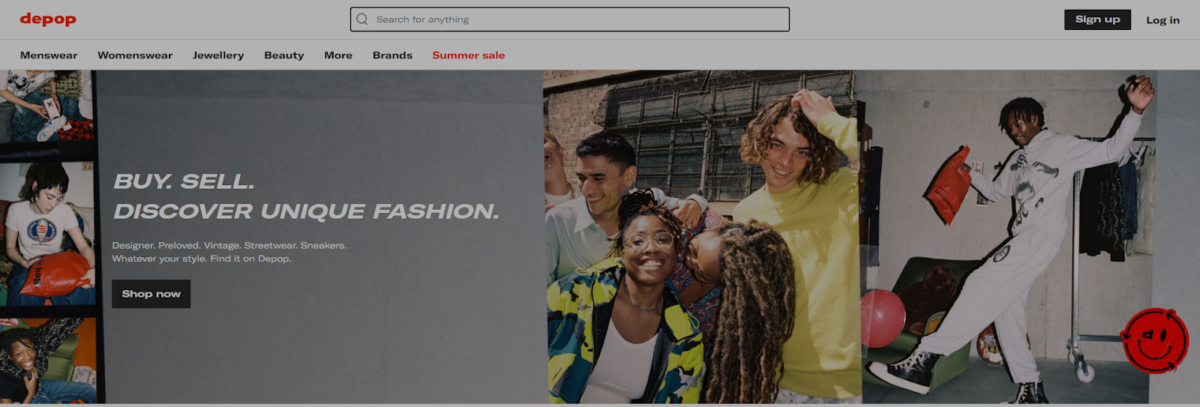
Depop is a global online marketplace with a focus on fashion resale and social inspiration. You can see what others are wearing, sell pieces from your closet, or even set up your own shop page. Get inspired by the latest trends, or inspire your friends and followers on this hybrid social-sales platform. They also have a mission to promote sustainability by keeping clothes out of landfills.
Facebook Marketplace
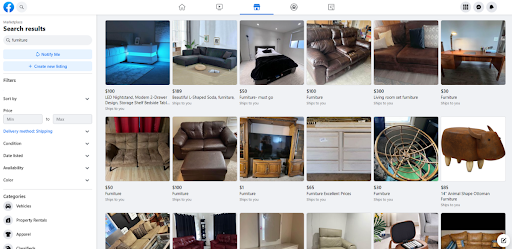
Facebook Marketplace has overtaken Craigslist as the best way to make local sales online. It inherently has a huge customer base thanks to the billions of Facebook accounts, allowing almost anyone to shop in just a few clicks. Facebook Marketplace is a great way to sell gently used items from your own closet, brand-new items, or just about anything else! You can even ship products if a customer outside your local area must have one of your pieces!
ThredUP
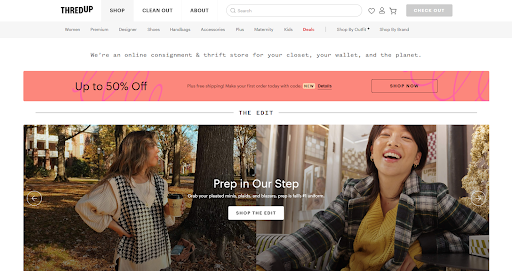
ThredUP is unique in that they do most of the work for you. Just send them your unwanted clothes, and they will inspect, photograph, and list them for sale. You may be paid up-front for in-demand items or by online consignment for traditionally slower sellers. It is also likely that not all of your items will be deemed sellable based on style and if they are in good condition.
For unwanted items, like old clothes, you must pay return shipping to get them back; Otherwise, they will recycle them for you. ThredUP is transparent that they only accept 40-50% of items sent to them. To send your clothes, order a $10 Clean Out Kit, which includes prepaid shipping.
eBay
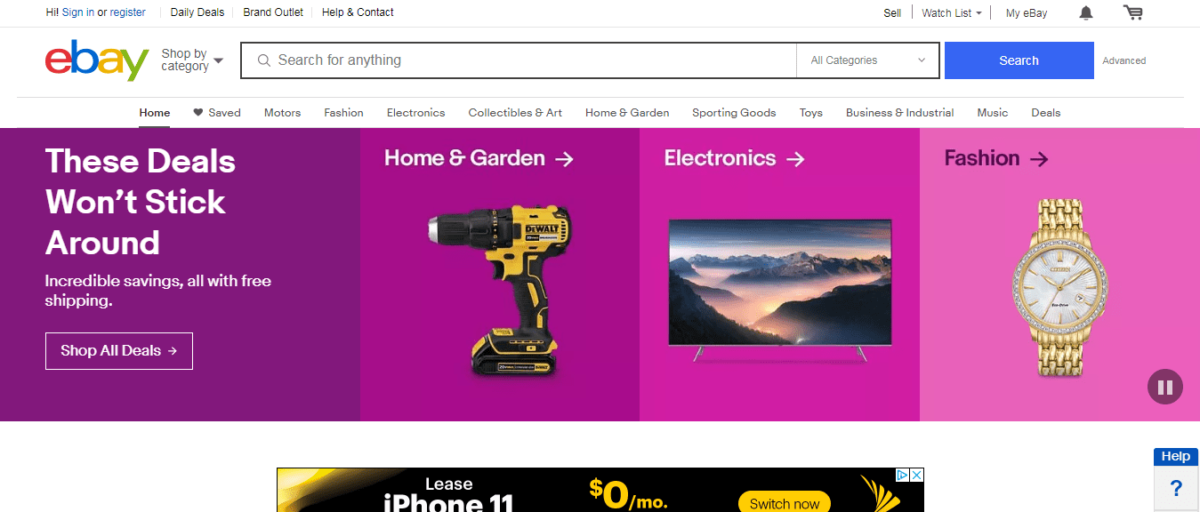
While eBay might not be the first place you think of when it comes to selling clothes online, don’t underestimate the popularity of this platform. Especially for rare or one-of-a-kind products, eBay can be a great place to reach a large, active audience of shoppers. Even for everyday items, eBay can be a dependable way to make sales (if you don’t mind competitive pricing and seller fees).
ASOS Marketplace
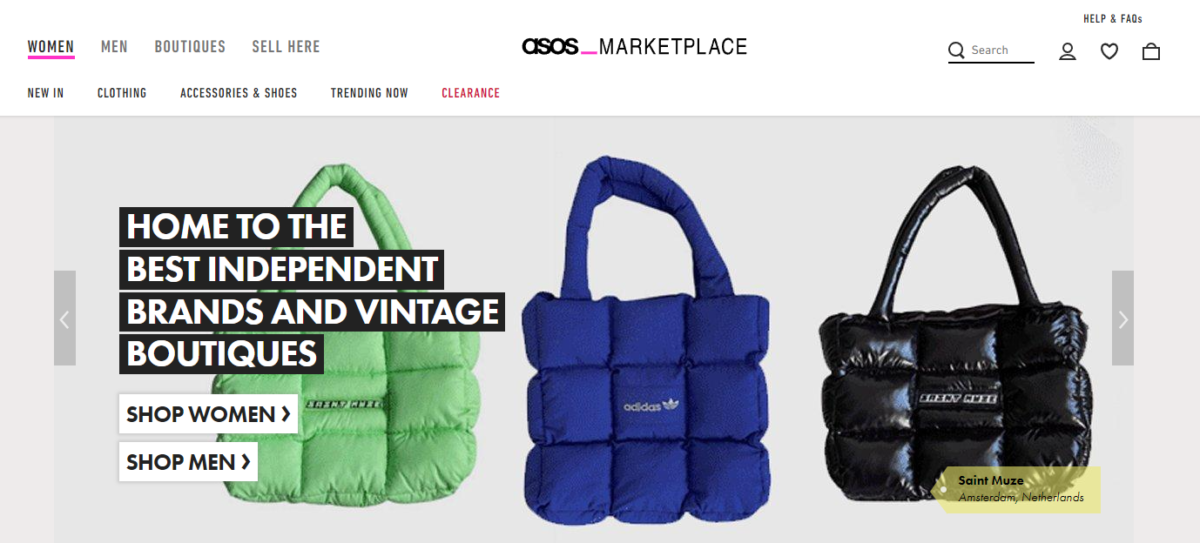
ASOS is a collection of one thousand independent labels and vintage boutiques. The marketplace offers highly curated items to an international audience. If you have a very on-trend boutique, you can apply to join ASOS Marketplace. There is a much higher bar to get accepted and remain active on this platform, though it can be an excellent opportunity for sellers with the right stuff.
The RealReal
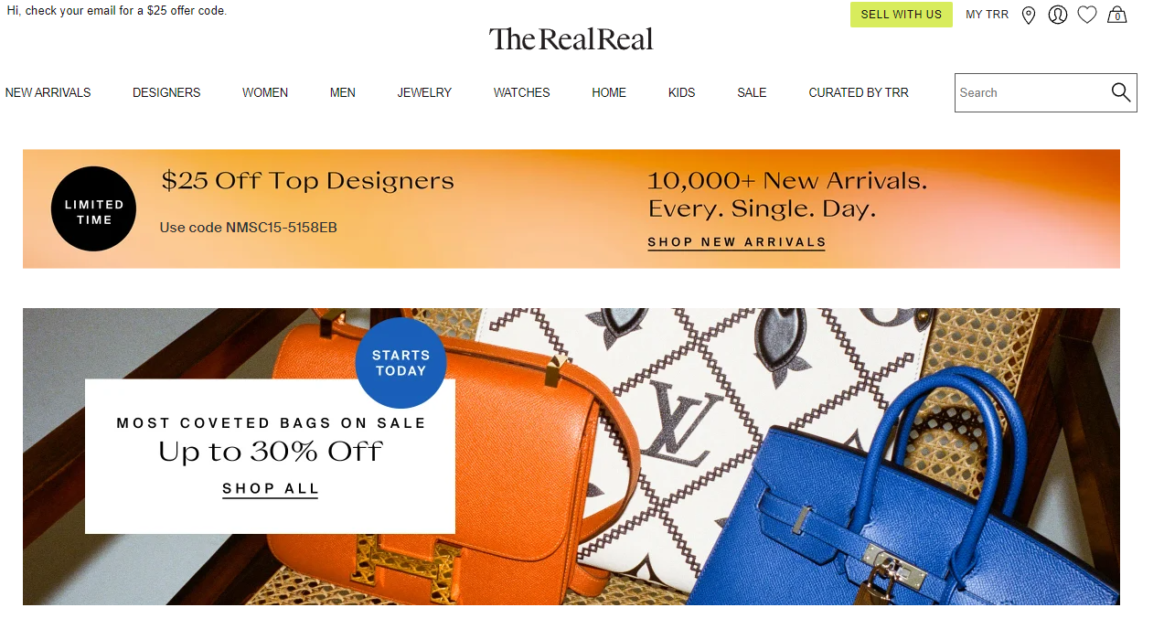
The RealReal is a good choice for high-end items like Chanel and Louis Vuitton. The advantage of this marketplace is that they have experts who vet items for authenticity, ensuring no knock-offs are being sold. This is obviously important for prospective buyers but also benefits sellers as fake products aren’t dragging down sale prices. If you have designer clothing collecting dust, consider selling them on The RealReal. They also deal in menswear, handbags, and home decor.
Style Alert
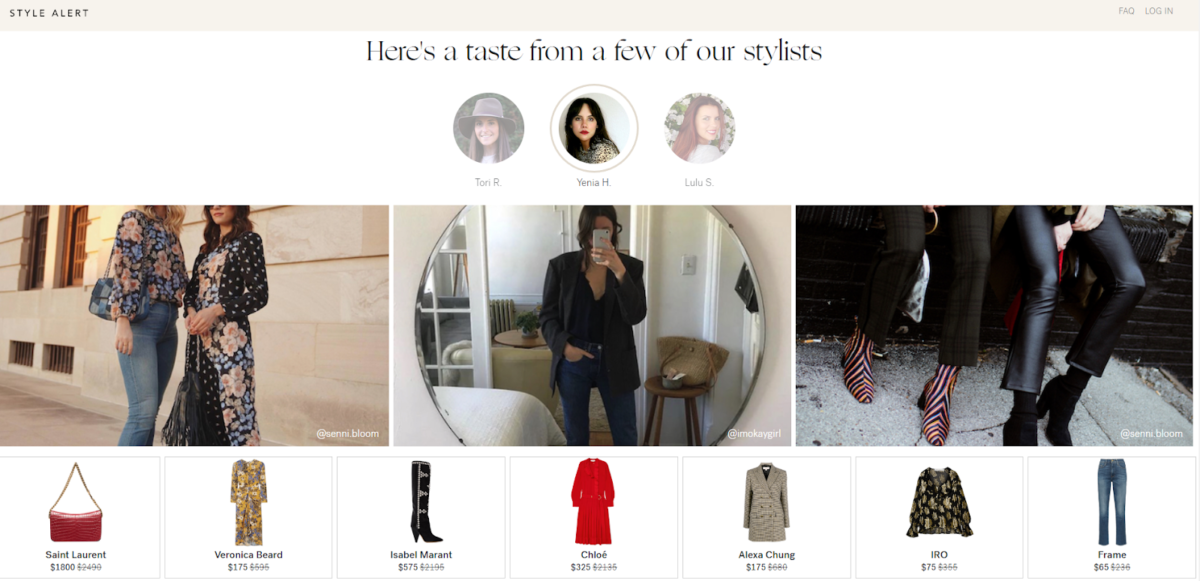
Style Alert combines a personalized styling service with pre-owned designer products. To keep a steady stream of gently owned clothing, they accept pieces from this list of brands. You can request a free Trade-In Kit to send in your clothes, then receive an itemized list of what they wish to purchase. Simply accept the offer for your payout. Any unaccepted items will require a fee for return shipping or be donated.
Rebag
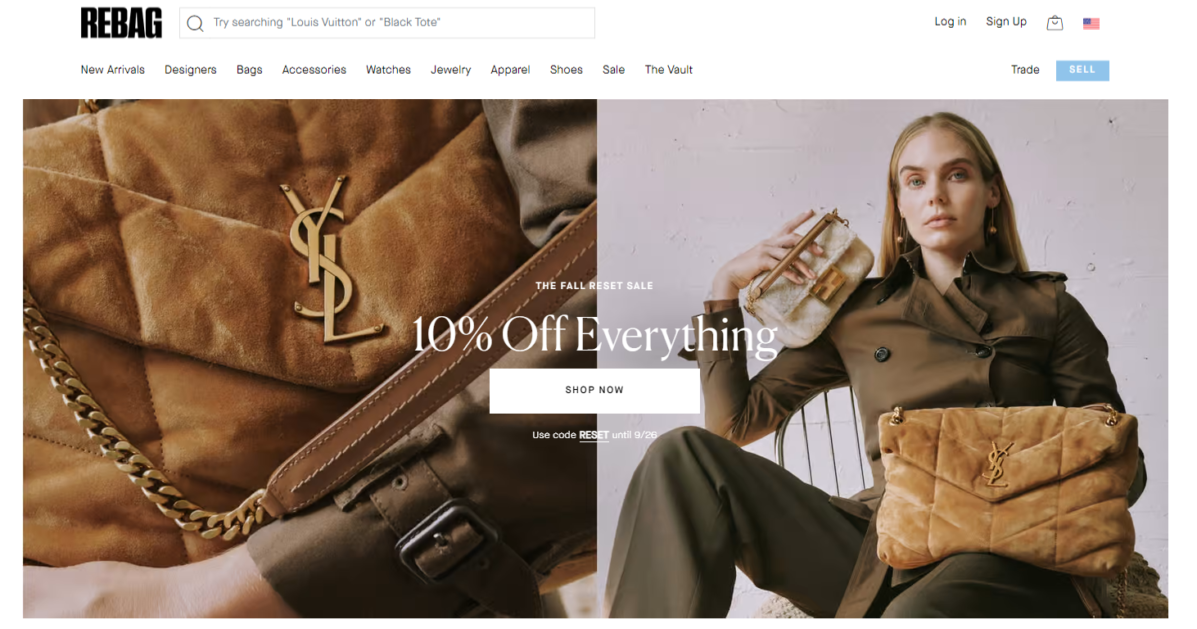
Rebag is another online store that authenticates designer items to weed out knock-offs. They also have the Clair AI, which can instantly give you the value of an item from a picture and simple details. Use this to get an idea of the value of an item so you can make an educated decision before sending it in. This is another good option for designer brands like Gucci and Prada.
Vinted
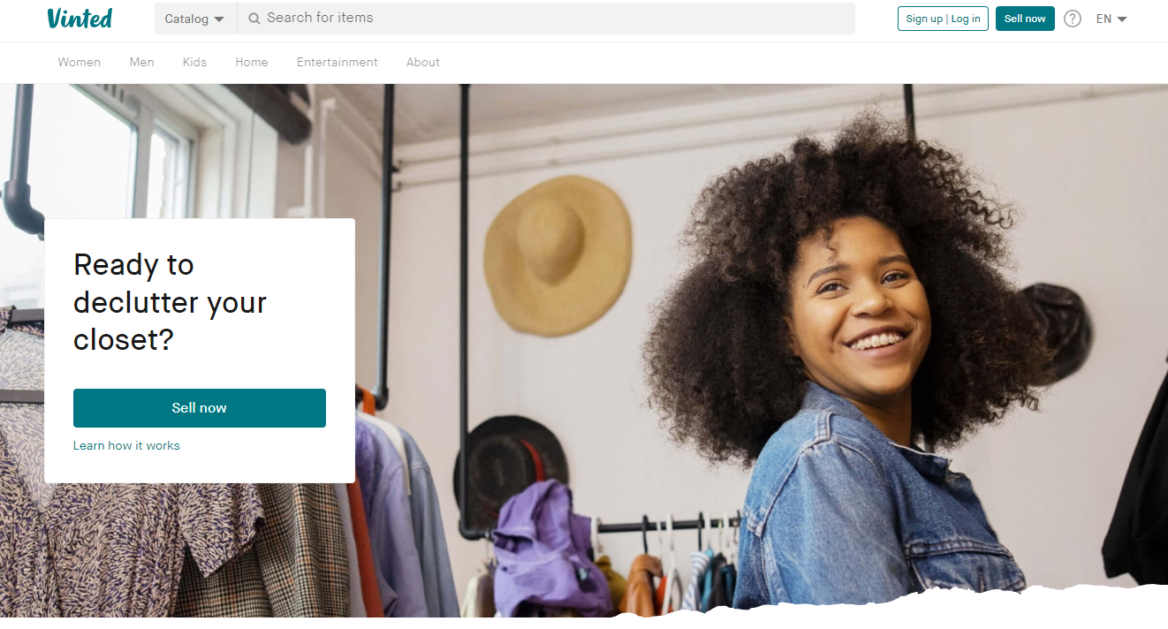
Vinted is an app that boasts zero selling fees for buying and selling pre-owned clothing. You can list items for free, receive a prepaid shipping label when an item sells, then receive your money upon confirmed delivery with no processing fee. Shoppers end up covering the shipping rate and other fees, making this a great platform for sellers!
Selling With Print-on-Demand (POD)
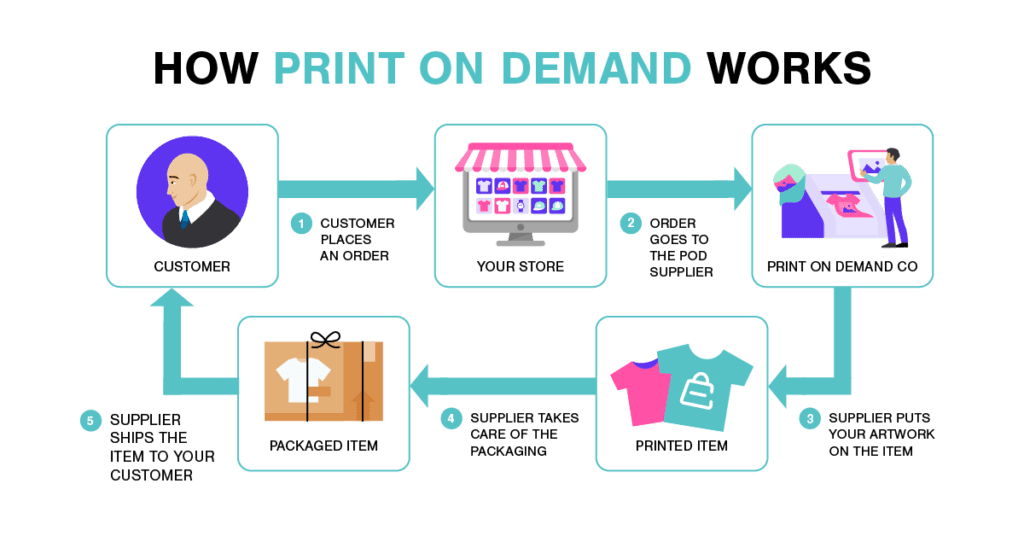
Print-on-demand services allow you to sell your designs without actually handling production or fulfillment. For example, you can design and market a t-shirt print that, when sold, is printed and sold by a third-party service. A POD service can be the perfect solution if you have a good idea for a clothing design but not the infrastructure to source and print them yourself.
Three print-on-demand services we recommend are:
There are many companies you can use for POD, but we found these to offer some of the best value and ease of use for custom clothing designs. They each also integrate with popular selling platforms like WooCommerce and Etsy.
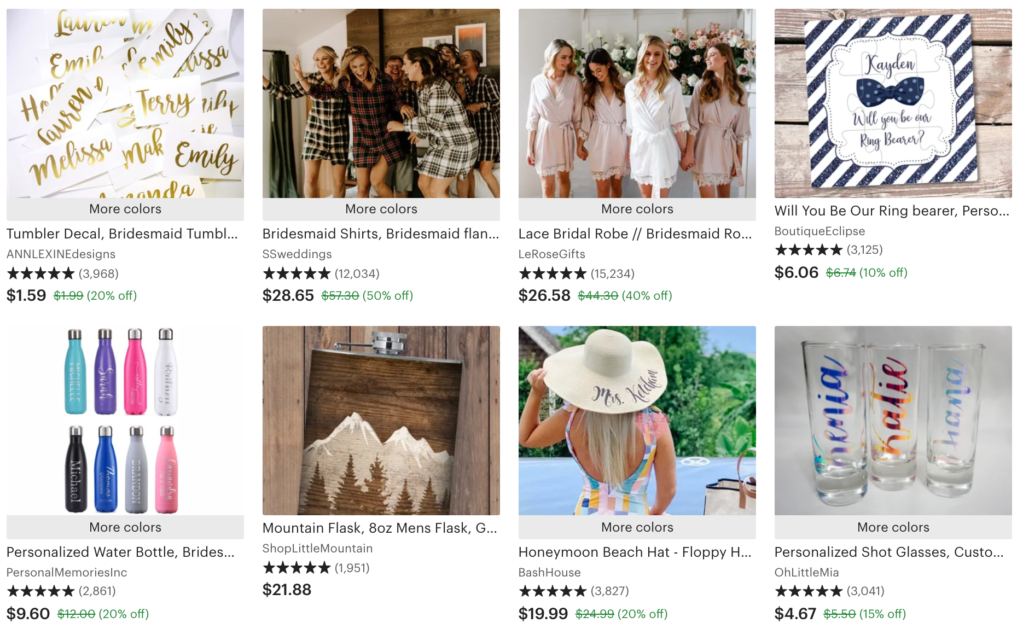
Tips for Successful Selling
Clothing is an extremely popular shopping category, meaning the competition can be fierce. There are countless others selling clothes online, from well-known brands to individuals cleaning out their closets. To be successful, you need a way to stand out from the crowd and connect with customers. Here are some tips.
High-Quality Photos
For such a visual product category as clothing and accessories, high-quality photos are crucial. You are already at somewhat of a disadvantage versus physical stores where shoppers can see, feel, and try on items in person, so you need your photographs and product descriptions to be their absolute best.
To achieve this, invest in a high-quality camera and professional lighting. At a minimum, you will want a 6-megapixel camera. Ideally, something in the double digits is best, though even eight will be a noticeable improvement over six.
As for lighting, natural lighting is preferred in many cases, though this is dependent on location, time, and weather. For artificial lighting, consider ring lights for even illumination with few streaks and shadows.
With those basics in mind, set up your photo area where you can get the best lighting and angles, and be sure to take multiple photos of each piece showcasing different elements of the item and a few different angles. If you have a model or mannequin, even better.
Set Competitive Prices
Pricing can make or break just about any sale. Depending on the demand and competition for that particular item or category, you will need to research what similar items are selling for.
If your pieces are rare or unique, the pricing is up to you; but if others are selling the same or similar product for less, you will undoubtedly lose some frugal customers.
This can also depend on your selling platform. If you are selling on your own ecommerce website, you have more freedom to price things how you want. However, if you are selling on Poshmark, you are just one of many search results and may lose out to lower resale prices from other sellers.
List the brand, color, price, and size
In addition to high-quality images, helpful product descriptions can help you land more sales. Noting things like brand, color, material, and size are important details for many shoppers.
Note that you should go beyond the minimum of a “small red cotton shirt.” Be as specific as possible, with a detailed description like “this soft cotton-blend top is a deep crimson color with a scoop neck and three-quarter sleeves.” Since online shoppers can’t try it on in-store, it is also helpful to clarify the fit by saying things like “the flowy design gives it a more forgiving fit, and petite body types may want to size down to XS.”
Not only are these details helpful to shoppers and making the sale, but they make you and your company look more professional and knowledgeable about your products.
Model the clothes
As mentioned in the photos section, modeling your products can be a great way to grab your customers’ attention and boost conversions. Even seeing a piece on a mannequin form is better than a 2D representation on a clothes hangar. This makes it difficult to imagine the cut and shape on a real person.
Modeling the clothes yourself or with a live model gives you many more options. Quick poses can speed up the process of catching different angles, and action shots will give shoppers a better idea of how the clothes will look and feel in real life.
Estimate Shipping Costs
You need to account for shipping costs and other fees if you are going to remain profitable. Luckily, you can estimate shipping costs for USPS based on weight, packaging, and which zone you are shipping to.
Services like UPS and FedEx allow you the save money by printing your own labels. You’ll need a scale to weigh your package (clothing plus packing materials) and, of course, a printer. This can save you time versus waiting in line at the post office, and you can even schedule package pickups from your home or business.
FAQs
Below are some common questions and answers about selling clothes online.
How Selling Clothes Online Can Turn Into an Online Business
The online fashion industry is worth an estimated 775 billion dollars and growing. It is one of the largest ecommerce categories, and the second-hand market is growing.
Selling clothing from your wardrobe or as a side hustle can be a great way to make money online. Many people have gotten their feet wet selling clothing through Poshmark or a direct sales company, then went on to launch their own online boutique.


![Outsell Your Biggest Competitors with these eCommerce Trends [2021]](https://thegateway.net.au/wp-content/uploads/2021/02/outsell-your-biggest-competitors-with-these-ecommerce-trends-2021.gif)




